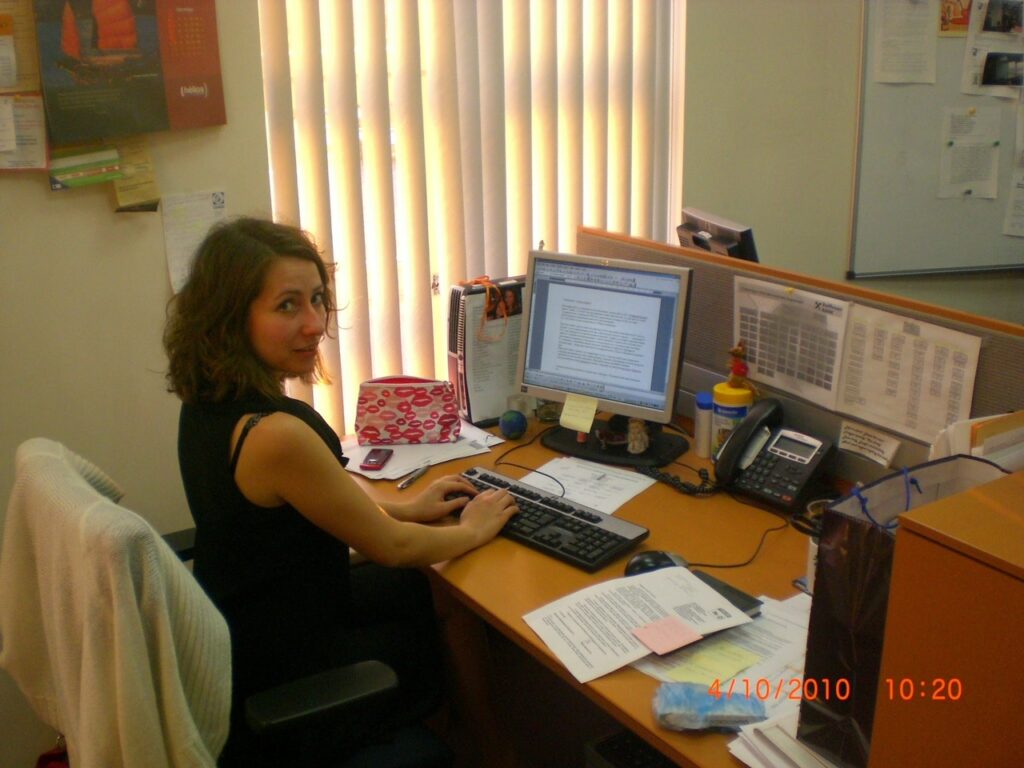In Brief

In 2005, I started to work in a very good bank as a teller. Back then, there was only way to deal with unhappy customers: if they wanted to file a complaint, we would send a letter to a complaint department in the head office and we would forget, move on. Or, even better, we would talk the client out of the dissatisfaction explaining that it was them, not us, and making it clear that no written complaint was necessary.
In 2006, I started working in a newly created Service Quality Management Department. At the time, less than 100 complaints were registered in the bank monthly. They were handled by the three of us: Nina the team leader, Olga, and myself.
Complaints details would be registered in an Excel spreadsheet, and our monthly report would roughly divide all cases into several nominal categories.
In 2015, leaving the bank as the head of Complaint Management, we were processing more than two thousand requests per month: comments, complaints, suggestions – all sorts of The Voice of The Customer. Everyone in the bank would use an automated system we created – Service Quality Management system, or, in short, “Remedy” – for registration, routing and monitoring customer feedback.
Fourteen people were working in my Complaints Department, part of the Service Quality Management Division managed by Nina who reported directly to the Board.
A detailed statistical report analysing customer expectations and the root causes of complaints was sent monthly to all departments.
It was a long way from the idea that a complaint is something terrible to understanding that complaints help to identify issues and take prompt action.
The shift did occur, from negative attitudes and fear of punishment to understanding the importance of long-term relationships with clients, from a lack of understanding of complaint handling to front-office staff empowered to reimburse customers on the spot.
It was a long way and loads of work, to build a seamless complaint-handling process. Along with building the process, we proposed and implemented a service improvement strategy in the bank.
The beginning
Today, automated and remote services are taken for granted. We see the world changing and artificial intelligence gradually replacing all routine work and, alas, human contacts.
It is hard to imagine that things used to be different. Deposits and transfers were not credited instantly but took several working days. Customers had to go to the branch in person to resolve most financial issues. Complaint handling was manual labour. My colleagues worked with many forms and Excel spreadsheets to fill. Email requests for various approvals were flying between the bank departments.
Unsurprisingly, an exchange of emails could change direction and get to the wrong place, only to be dismissed as unimportant information.
At the time, Nina, my boss then and my friend ever after, proposed an electronic complaint management system. “Proposed” is an easy thing to say now. On the one hand, there was an obvious need for transparent and convenient routing of customer enquiries. On the other hand, dealing with complaints was not a priority: in any bank, profit-generating activities are prioritised, not complaints. Justifying the need to allocate funds from the bank’s budget for “quality of service” was problematic and not trivial.
Without the strong and committed leader, the idea could not have been implemented so quickly; the cumbersome procedures would not have been conquered successfully. Thanks to Nina’s gift to explain and convince, we gained the understanding and involvement of the bank’s top management. The project office registered a new project – a new unified IT system for registering and processing claims and complaints on the Remedy platform (hence the name – Service Quality Management Remedy System).
Ouch!.. IT!
We were fortunate to receive, at the right time, support from a great professional who understood our ideas perfectly. It was Eugene from the Information Technology Department.
I recall our almost daily meetings, where we would discuss every detail of the system. Eugene would miraculously add all the new features and buttons while I was there and never required any written request from me to modify the design. (As it turned out later, he was on an almost volunteer mission. Later we had to urgently write the terms of reference and user manual “back date” – where are you, Olya Berezkina, the project manager? Thank you!).
Creating the system was a fascinating process: we constantly added new possibilities, fine-tuned functionality and made improvements.
The launch of the system
As one of the results of our programme of improvements, we started to communicate with other banks of the group. I remember a very special moment, a conference with colleagues from different countries where I presented our system. I felt incredibly proud that the Russian bank was a trailblazer in this area.
When presenting the Remedy system, I shared our plans for the future: to learn to seize not only complaints and claims but any feedback from customers.
Fieldwork
Implementing the strategy consistently was a very important task but not the only one. It was much more challenging to persuade front-office employees to register customer requests in the system and persuade employees of head office divisions to respond.
The second phase of the system implementation involved fieldwork: my colleagues and I would travel to different branches to train front office employees on how to use the system. I remember being very nervous. Will they accept the system? Will they use it? To me, the system was a dear baby and I wanted it to be accepted and loved by everyone. Love did come, but not immediately.
Open Doors
As a rule, people do not like change very much and, at first, perceive it negatively. The same was true about the SQM Remedy. “Another new system, more work.” “This is a way to count who has more complaints and then punish those departments.” “If I file complaints, they will think I am not doing my job properly”. Those were the most frequent initial reactions of the bank colleagues.
It was crucial to involve those who interact with customers directly, because front office people know better than anyone what customers think. To ensure that the voice of the customer was properly captured, we proposed official standards for feedback handling and introduced a broad definition of complaint – as any manifestation of dissatisfaction.
We also established an “open doors” principle –anyone could come to our department and get advice at any time. We would set our daily tasks aside to explain how the system worked or how colleagues should handle a complaint, and then, after regular working hours, we would stay late and do what had to be done that day. The bank’s head office and back office were initially unhappy about the need to record their comments in one system rather than use Lotus Notes.
Acceptance turned out to be a long process. I remember a phone conversation with the head of the currency control department, who explained, at length, why she and her staff could not and would not comment on anything in the system. I also remember a rather unpleasant letter from the Head of Operations. He criticised us for adding work to the departments reporting to him, already overloaded with work.
Goldmine
It took courage. However, step by step, everyone got used to our system and fell in love with it. After a while, it became impossible to imagine the bank without it. The system became a valuable source of information about problems in banking products, process flaws, the number of disputes and claims and compensations paid to regulate those, regional differences in customer expectations, and more.
I left the bank, moved to another country, and I am doing something very different now.
Nina and I, we both keep in touch with our all-star team, many of whom have continued to work in the same department.

In banking, technology has changed things a lot, and customer service is constantly evolving. I know that our system lives and wins. More than half of complaints are resolved in minutes – well done, team!
Vika Aleksandrova: “…and not only complaints!”
When the understanding came that customer complaints should be analysed, we already had some system to register complaints related to card transactions.
I also remember very well that such complaints were quite rare. I remembered stories behind the cases – the name of the customer, what happened, where, when, and how we resolved the complaint :)).
But the number of enquiries grew steadily as the number of clients grew, card, transactions became more diverse, the bank joined new payment systems…
It was impossible to remember everything, and, fortunately, I was joined by new colleagues (Marina Kodriyan!).
The SQM system has helped solve many problems, including alerting colleagues about the claim status, expected response dates, communication with clients, creating templates, redirecting flows, and much more. But the most important in any system are people who create, implement and operate it.
I was lucky to meet people with ideas and desire to implement the ideas – Marina, Vera and Nina; it was an exciting journey and an incredible experience!
Marina Kodryan: “Cards in SQM Remedy, one level up!
When the Bank decided to implement a system for recording customer feedback, we realised that this was our chance to move away from working with Exсel and bring our work with card claims to a new level. I joined Vika’s Card Transactions Department in 2007, and immediately deep dived into the project SQM Remedy system implementation,.
Together with colleagues from Service Quality Management we implemented the first two connected modules of the system – Card Transaction Complaints and Complaints.
It was a great team! Vera, Eugene and I were on the phone daily, generating ideas, trying and testing. We had to consider all the stages and statuses that claims and complaints go through – from filing requests in the bank branches, to resolution and letters to customers.
None of us had experience working with such systems, so we created our own one. It was cool! And the best part is that it all worked out!
I do not work at the bank anymore, but the System works fine and does all the more complex operations. It has been a journey like no other, from a system for complaints handling to one that can can issue chargebacks according to the rules set by analysts, summarise results of investigations, make refund entries and messaging clients.
I am proud to have been involved in developing the Service Quality Management (Remedy) system and to have worked together with Vika, Nina, Vera, Nikita, Eugene and Oleg. The system is in good hands now – my colleagues Masha Novikova and Olya Vavanova continue to develop it, to meet the new needs of the card world and the bank’s clients.

